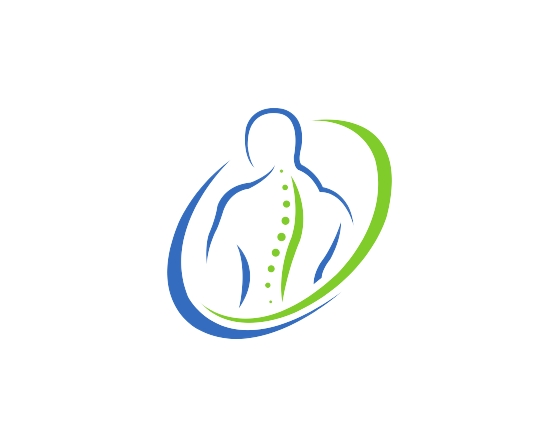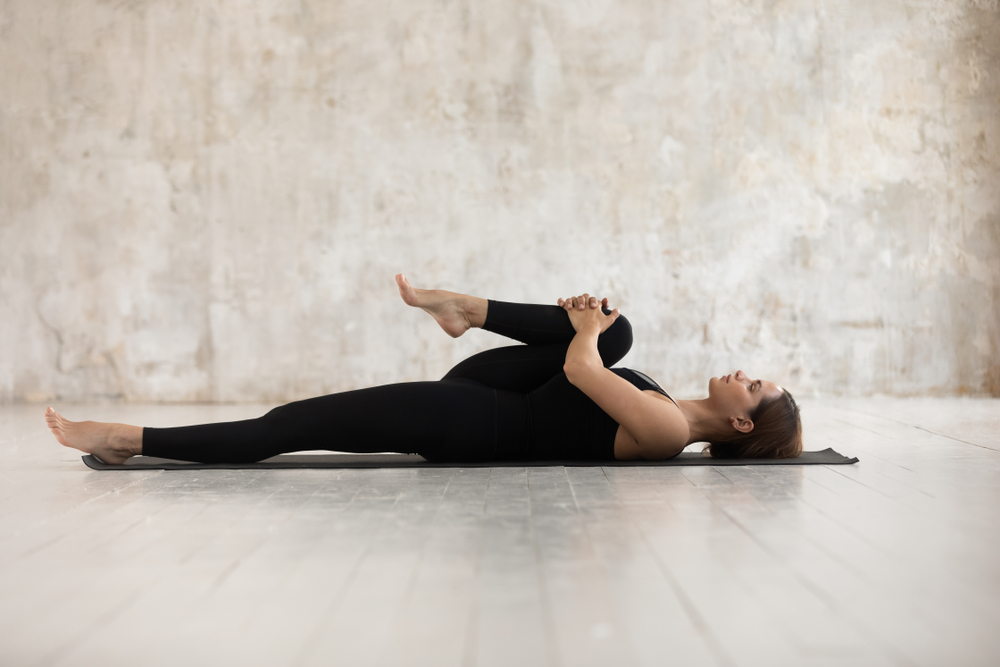Stretching and yoga are two of the most popular exercise trends in the last few years. They’re incredibly safe and effective, don’t require special equipment or extensive training, and can be done at home in your living room.
Yet, they can be challenging to understand. Many still need to learn what kind of stretching or yoga is best for them.
I’m here to help.
In this blog post, I’ll cover everything you need to know about these practices and how they can improve your health and fitness.
Stretching and Yoga: What’s the Difference?
Although stretching and yoga share some similarities, they are fundamentally different.
Consequently, they perform distinct responsibilities in your training regimen. Knowing the difference between stretching and yoga is necessary to identify whether one is more suited than the other.
What Is Stretching?
Stretching is a type of exercise whose purpose is to increase flexibility. Therefore, it is much more deliberate and precise.
Stretching exercises are designed to lengthen particular muscles or tendons. Until a critical level of resistance is reached, gentle but sustained force is used. It is gradually expanded by repetition.
Stretching takes vigilance to avoid overextending or injuring muscles, tendons, and ligaments.
Stretching is commonly performed before or after exercise to release stiff muscles and tendons. Stretching can also be tailored to specific types of exercise, such as running, sports, and gym routines. As stretching can be uncomfortable, it is recommended to maintain composure and take calm breaths for the desired benefit.
Benefits of Stretching
1. Boosts Your Flexibility
Regular stretching can enhance your flexibility, which is vital to your general health. Not only may increased flexibility allow you to do daily tasks with minimal effort, but it can also delay the age-related loss of mobility.
2. Enhances Your Range of Motion
Regular stretching can assist in expanding your range of motion. Moving a joint over its complete range of motion provides greater mobility.
3. Improves Your Endurance in Physical Activities
It has been demonstrated that practicing stretching exercises before physical activities helps prepare the muscles for the action. Additionally, it may enhance your efficiency in athletic training or workout.
4. Promotes Muscle Blood Circulation
Regular stretching may increase blood circulation. Improved circulation boosts blood flow to the muscles, reducing muscle discomfort and reducing recovery.
5. Enhances Your Posture
A combination of muscle strengthening and stretching can relieve musculoskeletal pain and promote appropriate alignment, which improves your posture.
6. Relieves and Prevents Back Discomfort
By stretching the muscles, a regular stretching routine can aid in the recovery from a back injury. It can also help prevent future back pain by strengthening the back muscles and decreasing the likelihood of muscle tension.
7. Excellent Stress Alleviation
Physical and mental stress can be alleviated by stretching the parts of your body where you tend to store tension, including your neck, shoulders, and upper back.
8. Stretching Can Relax the Mind
Regular participation in a stretching program might help to quiet the mind. Focus on mindfulness and meditation activities, which provide a mental break as you stretch.
9. Reduces Tension-Related Headaches
In addition to a healthy diet, sufficient water, and ample rest, stretching can help alleviate headache-related tension.
What Is Yoga?
The word “yoga,” derived from Sanskrit, the language of yoga’s origin, is translated literally as “union.” Thus, yoga unites the mind and body through breath.
Yoga is an ancient discipline that requires concentration and mental calmness in addition to focused breathing, stretching, and balancing.
Yoga can be practiced in various ways, including yin, flow, vinyasa, Hatha, ashtanga, and others. The way the yoga positions are done varies slightly despite being similar.
Rhythmic breathing exercises are performed throughout each position and sequence in all types of yoga.
Yoga promotes mindfulness, positively affecting your physical, emotional, and mental health.
Benefits of Yoga
1. Enhances Strength, Balance, and Flexibility
While maintaining a pose might help you gain strength, slow, deep breathing and movement warm up your muscles and enhance blood circulation.
2. Aids Back Pain Healing
Yoga is just as effective as simple stretching to reduce pain and enhance mobility in those with lower back pain.
3. It Helps Reduce Arthritis-Related Pain
People with arthritis who practice gentle yoga have less pain and swelling in their painful, swollen joints.
4. Improves Heart Health
Yoga practice may lower stress and overall inflammatory levels, promoting heart health.
5. It Helps You Unwind, Promoting Better Sleep
A regular evening yoga program will assist you in setting the right mood and preparing your body for sleep.
6. Increases Energy and Happier Moods
Regular yoga practice can improve mental and physical energy, increase attentiveness and excitement, and reduce negative emotions.
7. It Helps You Cope With Stress
Yoga promotes psychological health, mindfulness, good nutrition, weight management, restful sleep, and stress management.
8. Provides a Connection to a Support Network
Yoga sessions can reduce feelings of isolation and facilitate communal recovery and companionship.
9. Improves Self-Care
Yoga is excellent for self-care since it has physical and mental advantages.
Different Types of Stretching Exercises
1. Dynamic Stretching
Dynamic stretching is a type of stretching that involves using the full range of motion.
Ballistic dynamic stretching and active dynamic stretching are the two subcategories.
a. Ballistic Dynamic Streching
Ballistic dynamic stretching is referred to as “bounce stretching.” This stretching is typically not advised for people who want to keep in shape or increase flexibility because of the danger of pulling or straining muscles.
b. Active Dynamic Stretching
Active dynamic stretching enables controlled movements over the whole range of motion. The stretch reflex is avoided by carefully warming up the muscles as they extend their range of motion with controlled movement.
This type of stretching is better at protecting muscles and the tissues around joints from harm, which is also the preferred warm-up exercise of most athletes.
2. Active Stretching
Active stretching is when an opposing muscle group contracts to widen the stretch. For instance, you can straighten your leg with your quadriceps to stretch your hamstring by releasing tension.
3. Passive Stretching
Passive stretching is when a muscle is forced to change its range of motion by an external force.
For example, passive stretching is when you stretch your calf muscles by lowering your heel to the curb. You let gravity and your body’s weight cause the forces to try more.
4. Static Stretching
Static stretching is keeping a stretch for a predetermined amount of time. Most static stretches last between 8 and 10 seconds and up to 2 minutes.
It is the most popular type of stretching that is regarded as secure and efficient.
5. Proprioceptive Neuromuscular Facilitation (PNF) Stretching
Proprioceptive Neuromuscular Facilitation (PNF) stretching is referred to as the stretch, contract, stretch system.
By contracting the muscle, the joint stimulates the neuromuscular system (Golgi tendon). The muscle can then totally relax and stretch as a result.
In this case, raising the leg would passively stretch the hamstring.
The hamstring would then be contracted against resistance and maintained for a few seconds before being instantly pulled to allow a deeper stretch. It appears as though the muscle “let go” and fully extends.
It has been demonstrated that PNF stretching enhances both active and passive range of motion.
Popular Types of Yoga
1. Hatha Yoga
Hatha, which is a Sanskrit term, means “power.” Hatha yoga thereby restores the body’s equilibrium. This style of yoga focuses on balancing the energy centers and chakras. The energy vortexes or concentrated energy centers in our bodies are called chakras.
Numerous physical positions and postures in hatha yoga balance the body and psyche. There are underlying similarities among the many yoga styles taught by different schools and teachers.
2. Ashtanga Yoga
The Yoga Sutras of the sage Patanjali are directly related to Ashtanga yoga. The word “ashtanga” is a Sanskrit derivation of the word “eight,” which is well-known as the yoga style for weight loss.
Principles, personal discipline, asana and postures, pranayama, withdrawal, concentration, meditation, and salvation are the eight pillars of Ashtanga yoga.
3. Vinyasa Yoga
Yoga in this style is frequently referred to as “flow” yoga. Vinyasa comprises two parts: Vi, which means variation, and Nyasa, which implies within specified limitations.
Vinyasa yoga combines breathing and movement practices. Combining controlled breathing with a flow of postures, it imitates the course of life.
Advanced vinyasa yoga practices include meditation, which gives the style a more contemplative feel.
4. Kundalini Yoga
Kundalini yoga also referred to as the “yoga of awareness,” entails repeated positions. The dormant kundalini Shakti is awakened via Kundalini yoga. The base of the spine is where this spiritual force resides.
Chanting precedes the movements, followed by pranayama, or carefully regulated breathing. It is followed by Kriya, a series of poses or mudras (specific hand positioning). The next step is pranayama, followed by chanting and meditation.
5. Iyengar Yoga
Vinyasa yoga and this kind of yoga are similar. B.K.S. Iyengar, one of the world’s top yoga instructors, is responsible for giving it its name.
Iyengar yoga is different from the other forms of yoga. It emphasizes opening the body up, alignment of the body, and posture in particular. To refine positions, it also employs accessories like yoga blocks and belts.
6. Aerial Yoga
Aerial yoga is appropriate for beginners as well as more experienced yogis. It promotes the development of lean, toned muscles.
In contrast to traditional yoga, aerial yoga also includes other activities while resisting gravity. It combines the benefits of aerobic exercises like swimming or jogging with yoga.
During aerial yoga, a rope suspends our body in the air, and the following poses are described.
How to Choose Between Stretching and Yoga Exercises
Individuals of various fitness levels can practice yoga and stretch. You are free to choose either option.
However, it is essential to examine your exercise goals when deciding between yoga and stretching.
Choose yoga if you desire an additional workout because it improves your strength, breathing, attention, and mindfulness.
Utilize a brief stretching practice, such as Hyperbolic Stretching, that is suitable for both beginners and advanced exercisers to enhance the effectiveness of your daily exercise regimen.
If you choose yoga, you must account for the additional time and expense of the necessary equipment.
You must experiment with various types and methods to determine which is most beneficial to your health and life objectives.
Advantages of Combining Stretching and Yoga Exercises
It’s easy to understand how yoga and stretching can reinforce and improve one another’s practices.
The practice of yoga can have a very beneficial influence on athletes and sportspeople who are intensely involved in their sport.
In addition to the many other advantages of yoga, it offers a thorough and profound stretching of the entire body. It includes the mental equivalents of relaxing and relieving tension.
Similarly, certain stretching activities can complement and strengthen your yoga practice.
It is essential to remember when there is an existing injury or when the body has been overused.
Bottom Line
Stretching is essential to a healthy lifestyle, yet it is frequently overlooked.
The act of stretching is an essential component of yoga. Yoga is an excellent practice for improving general strength, flexibility, and balance.
Stretching exercises need more movement and focus on a particular muscle group or area of the body. Most of the time, they are utilized in conjunction with many other types of physical activity, as well as for therapeutic and healing purposes.
Combining the practices of yoga with stretching has been shown to accelerate healing and improve athletic performance.
If you’re ready to be transformed today, check out the World’s leading flexibility transformation program for guaranteed results.
You may also choose to Unlock Your Hip Flexors and join the program to say goodbye to lower back discomfort, low sexual performance, circulation difficulties, and more!


